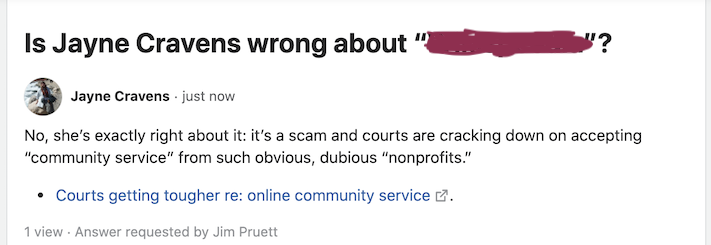
Mental Illness Awareness Week 2020, October 4-10, is winding down, and it’s a good time to remind ourselves that we are ALL all under a tremendous amount of stress now per so many, many things associated with the global pandemic (at least if we’re among those taking it seriously). And some of us are also dealing with enormous amounts of anger from customers, clients and others.
I wrote a series of tweets, published Wednesday, to talk about dealing with intense anger from co-workers, clients, customers and others. The first was an introduction tweet that had much of the same content of the opening paragraph. Here is the content of the rest of the tweets:
Anger isn’t automatically a bad thing. Anger fuels social justice movements, human rights movements & important changes in societies & systems. Anger can even be an effective motivator of volunteerism. But anger can also hijack a person’s life in negative, even dangerous ways. [2/17]
Intense anger can affect reasoning and self-control, which can be further weakened by substance use &/or mental illness, ranging from depression to delusional thinking. That kind of intense anger can affect, even destroy, your work and relationships. [3/17]
If you are seen as a perpetually and irrational angry or vindictive person, it can affect your employability, your ability to keep employees and volunteers at your nonprofit – & even the funding of your nonprofit, NGO or charity. [4/17]
If you are online a lot, you see intense, irrational anger among trolls, those people whose primary purpose online seems to be to hurt others. Many aren’t anonymous: they don’t care that their barrage of insults hurts their professional reputation. [5/17]
That kind of intense, irrational anger and aggression are closely tied to several mental health conditions, including major depression, bipolar, irritability, Oppositional defiant behavior, Narcissistic personality, and PTSD https://www.goodtherapy.org/learn-about-therapy/issues/anger [6/17]
Program managers at nonprofits, NGOs & charities, as well as managers of volunteers, need to support staff in dealing with angry customers, clients, volunteers, donors and others. Dealing with intensely angry people is draining and people need to feel supported in this work. [7/17]
It’s not just your social media manager: even if your nonprofit, NGO or charity staff are all working from home, they may be dealing with intensely, even irrationally angry customers, clients, volunteers, donors and others. [8/17]
And your staff may be dealing with situations such that they are quite angry themselves and it may be affecting their work. Senior managers need to assume that both of these scenarios might be happening and take steps to help. [9/17]
Remind staff that you know things are tough now & that tensions can be running high among staff & volunteers, as well as those they’re dealing with. Talk openly about anger: how to deal with it ourselves & with it among customers, clients, volunteers, donors & others. [10/18]
Emphasize SAFETY. People should feel safe in doing their work. Talk about what harassment looks like. Give staff safe ways to report harassment from colleagues, customers and the public and to talk openly about the difficulty in dealing with it. [11/18]
Make sure staff know when harassment becomes something potentially illegal and even dangerous. Know when to call police. These resources regarding online harassment, defamation & libel can help: http://www.coyotebroad.com/work/harass.shtml [12/18]
Circulate mental health support resources among all employees, volunteers and consultants, including those focused specifically on dealing with anger, like Anger management: 10 tips to tame your temper from the Mayo Clinic:
https://www.mayoclinic.org/healthy-lifestyle/adult-health/in-depth/anger-management/art-20045434 [13/18]
Psychologists can help people recognize and avoid the triggers that make them angry. They can also provide ways to help people manage the inevitable anger that sometimes flares without warning.
https://www.apa.org/topics/understanding-anger [14/18]
Is your temper hijacking your life? Tips and techniques can help you get anger under control and express your feelings in healthier ways.
https://www.helpguide.org/articles/relationships-communication/anger-management.htm [15/18]
Here are Anger Management Treatment Program Options
https://www.psychguides.com/anger-management/treatment/
[16/18]
Here is advice on What To Do When You Have Anger Issues
https://www.betterhelp.com/advice/anger/what-to-do-when-you-have-anger-issues/ [17/18]
& the best for last: NAMI is the National Alliance on Mental Illness. The NAMI HelpLine can be reached Monday through Friday, 10 am–6 pm, ET. 1-800-950-NAMI (6264) or info@nami.org [18/18]
Twice this year, I have dealt with intensely angry and irrational people in my work. In both cases, it’s been utterly exhausting. In one case, heartbreaking, because it is related to dementia to someone I respect a great deal, and in another case, it’s terrifying, because I fear it could turn violent. And as an independent consultant, with no staff – it’s just me – I don’t have a supervisor to check in on me, I don’t have a staff to delegate some responsibilities too, and I can’t follow a lot of the advice I’ve just offered above. Coupled with the global pandemic and a very intense political situation, these are particularly difficult times for independent consultants. So I want to give a specific shout out to such consultants who are in a similar position. Reach out to me if you need to talk.
In addition, the same day, I tweeted about domestic violence and the importance of any workplace having a domestic violence policy and training staff, including volunteers, on how to recognize domestic violence and where to find guidance and resources for themselves or co-workers – because all that is also a mental health issue and is most definitely, and sadly, related to helping someone navigate, and protect themselves from, someone else’s anger. I won’t re-create those tweets here, but here’s the start of that much shorter series.

If you have benefited from this blog or other parts of my web site and would like to support the time that went into researching information, developing material, preparing articles, updating pages, etc. (I receive no funding for this work), here is how you can help.










